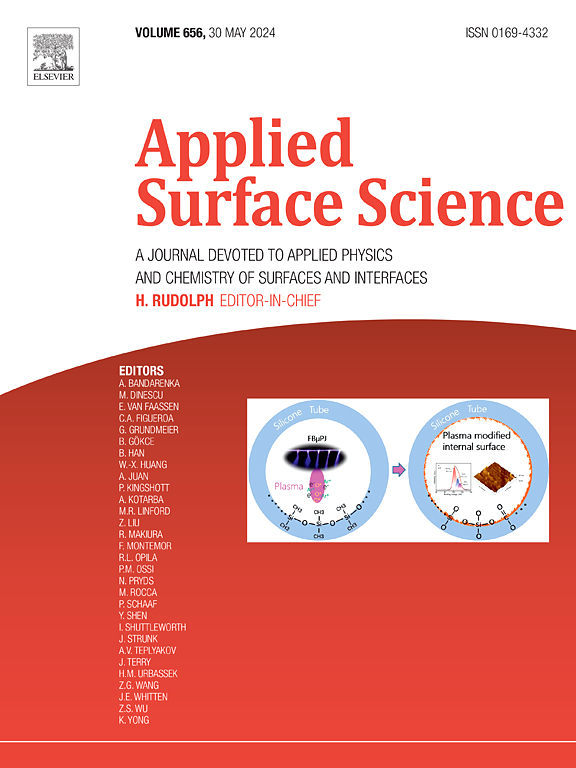利用AlPMo-X@ZIF-67增强对水中全氟辛酸的降解:利用Al⋅⋅⋅F形成和PMS活化
IF 6.9
2区 材料科学
Q2 CHEMISTRY, PHYSICAL
引用次数: 0
摘要
为了解决水中全氟辛酸(PFOA)污染的持续挑战,我们开发了一种多功能催化剂AlH3P2Mo18-X@ZIF-67(缩写为AlPMo-X@ZIF-67, X 表示AlPMo的量),它集成了铝增强的氟亲和性,道森型多金属氧酸盐介导的多电子氧化还原循环以及zif -67衍生的纳米限制效应。系统评价了催化剂对PFOA的去除率、主要影响因素(如反应时间、pH、初始浓度、催化剂投加量)和降解机理。结果表明,PFOA吸附和活性物质的协同作用是有效降解PFOA的关键。具体来说,Al3+位点通过Al⋅⋅⋅F配位固定PFOA,削弱C-F键,而Mo5+/Co2+协同活化过氧单硫酸盐(PMS)生成SO4⋅-、⋅OH、O2⋅-和1O2。在纳米密闭环境中,PFOA的降解过程包括吸附诱导的C-F键减弱、脱羧、羟基化、HF消除和链缩短水解。该多机制方法在30 min(10 g/L催化剂,30 g/L PMS, pH 5, 55 °C)内实现了96.4 % PFOA的去除率,在4 h内实现了48.1 %的脱氟。此外,降低急性和慢性毒性以及催化剂的高稳定性突出了其在实际水处理应用中的潜力。本研究通过整合分子识别、键激活和纳米限制催化,为持久性污染物的修复提供了重要的进展。本文章由计算机程序翻译,如有差异,请以英文原文为准。


Enhanced degradation of Perfluorooctanoic acid from water using AlPMo-X@ZIF-67: Leveraging Al⋅⋅⋅F formation and PMS activation
To address the persistent challenge of perfluorooctanoic acid (PFOA) contamination in water, we developed a multifunctional catalyst, AlH3P2Mo18-X@ZIF-67 (abbreviated as AlPMo-X@ZIF-67, where X denotes the amount of AlPMo), which integrates aluminum-enhanced fluorine affinity, Dawson-type polyoxometalate-mediated multi-electron redox cycling, and ZIF-67-derived nanoconfinement effects. The catalyst was systematically evaluated for PFOA removal efficiency, key influencing factors (e.g., reaction time, pH, initial concentration, and catalyst dosage), and degradation mechanisms. The results revealed that the synergistic effect of PFOA adsorption and reactive species action was critical for effective degradation. Specifically, Al3+ sites immobilized PFOA through Al⋅⋅⋅F coordination, weakening the C–F bond, while Mo5+/Co2+ cooperatively activated peroxymonosulfate (PMS) to generate SO4⋅–, ⋅OH, O2⋅–, and 1O2. Within the nanoconfined environment, PFOA underwent stepwise degradation, involving adsorption-induced C–F bond weakening, decarboxylation, hydroxylation, HF elimination, and chain-shortened hydrolysis. This multi-mechanistic approach enabled 96.4 % PFOA removal within 30 min (10 g/L catalyst, 30 g/L PMS, pH 5, 55 °C) with 48.1 % defluorination in 4 h. Additionally, the reduction in acute and chronic toxicity and the catalyst’s high stability highlighted its potential for practical water treatment applications. This work provided a significant advancement in persistent pollutant remediation by integrating molecular recognition, bond activation, and nanoconfinement catalysis.
求助全文
通过发布文献求助,成功后即可免费获取论文全文。
去求助
来源期刊

Applied Surface Science
工程技术-材料科学:膜
CiteScore
12.50
自引率
7.50%
发文量
3393
审稿时长
67 days
期刊介绍:
Applied Surface Science covers topics contributing to a better understanding of surfaces, interfaces, nanostructures and their applications. The journal is concerned with scientific research on the atomic and molecular level of material properties determined with specific surface analytical techniques and/or computational methods, as well as the processing of such structures.
 求助内容:
求助内容: 应助结果提醒方式:
应助结果提醒方式:


